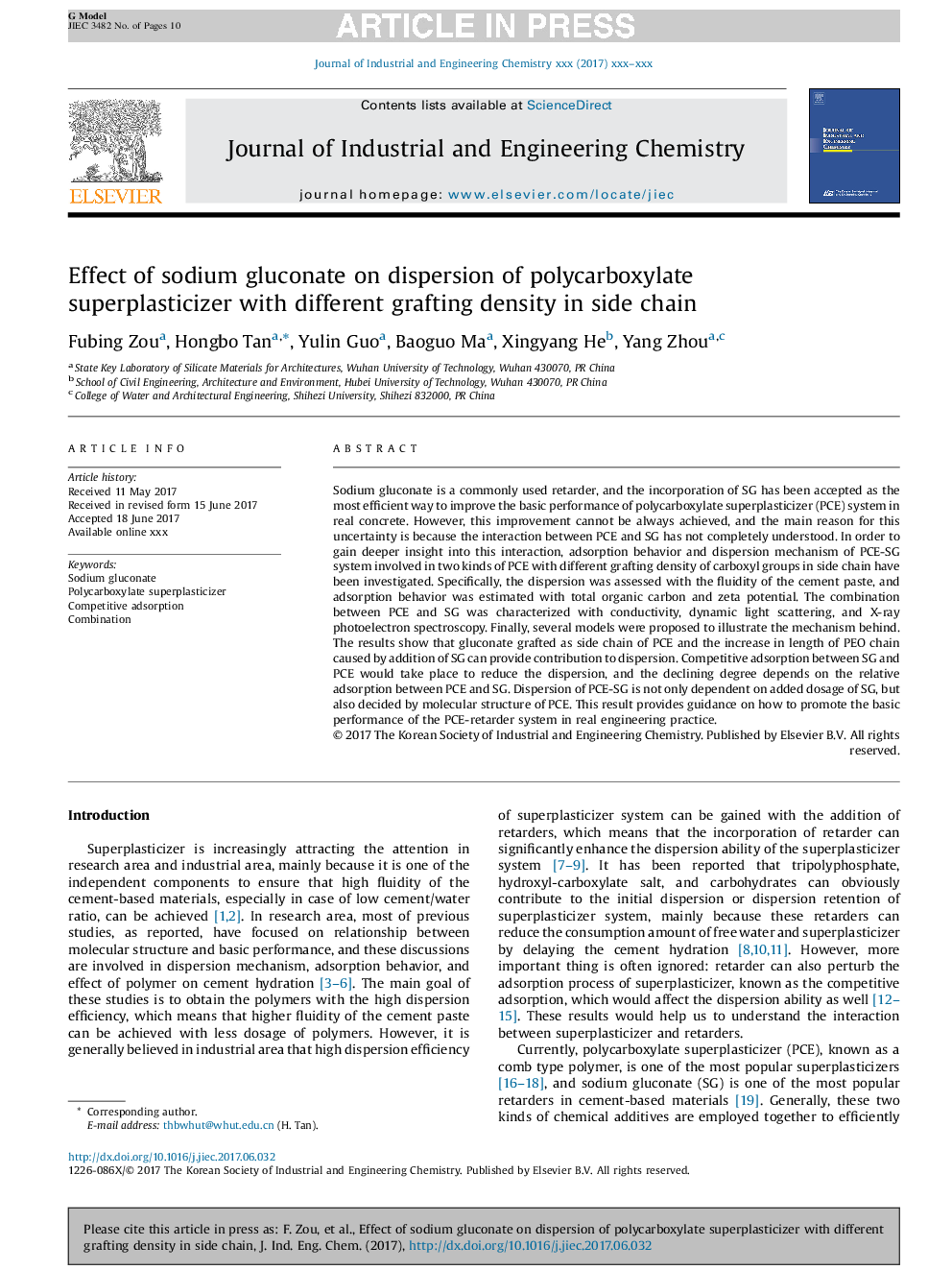| Article ID | Journal | Published Year | Pages | File Type |
|---|---|---|---|---|
| 6667532 | Journal of Industrial and Engineering Chemistry | 2017 | 10 Pages |
Abstract
Sodium gluconate is a commonly used retarder, and the incorporation of SG has been accepted as the most efficient way to improve the basic performance of polycarboxylate superplasticizer (PCE) system in real concrete. However, this improvement cannot be always achieved, and the main reason for this uncertainty is because the interaction between PCE and SG has not completely understood. In order to gain deeper insight into this interaction, adsorption behavior and dispersion mechanism of PCE-SG system involved in two kinds of PCE with different grafting density of carboxyl groups in side chain have been investigated. Specifically, the dispersion was assessed with the fluidity of the cement paste, and adsorption behavior was estimated with total organic carbon and zeta potential. The combination between PCE and SG was characterized with conductivity, dynamic light scattering, and X-ray photoelectron spectroscopy. Finally, several models were proposed to illustrate the mechanism behind. The results show that gluconate grafted as side chain of PCE and the increase in length of PEO chain caused by addition of SG can provide contribution to dispersion. Competitive adsorption between SG and PCE would take place to reduce the dispersion, and the declining degree depends on the relative adsorption between PCE and SG. Dispersion of PCE-SG is not only dependent on added dosage of SG, but also decided by molecular structure of PCE. This result provides guidance on how to promote the basic performance of the PCE-retarder system in real engineering practice.
Related Topics
Physical Sciences and Engineering
Chemical Engineering
Chemical Engineering (General)
Authors
Fubing Zou, Hongbo Tan, Yulin Guo, Baoguo Ma, Xingyang He, Yang Zhou,
